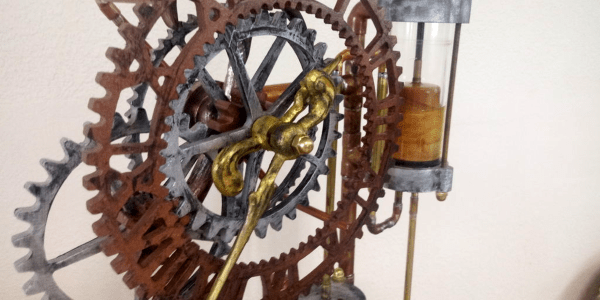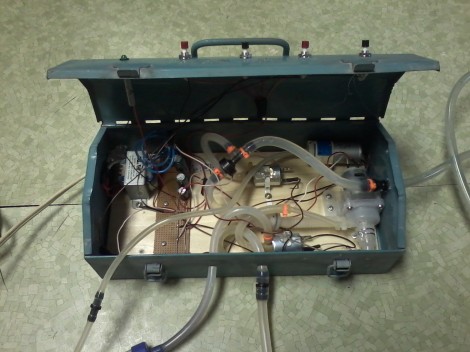The funny thing about clocks is that the more intriguing they are to look at, the more precious time is wasted. This steampunk clepsydra is no exception. A clepsydra, or water thief clock is an ancient design that takes many forms. Any clock that uses the inflow or outflow of water to measure time could be considered a clepsydra, even if it uses electronics like this steampunk version.
[DickB1]’s sticky-fingered timepiece works by siphoning water from the lower chamber into the upper chamber on a one-minute cycle. An MSP430 and a MOSFET control the 12 V diaphragm pump. As the water level rises in the upper chamber, a float in the siphon pushes a lever that moves a ratchet and pawl that’s connected to the minute hand. The hour hand is driven by gears. A hidden magnet and Hall effect sensor help keep the clock clicking at one-minute intervals.
Although [DickB1] doesn’t tell you exactly how to replicate this clock, he offers enough information to get started in designing your own. Take a second to check it out after the break.
Most of the thieving around here is done for the joules, so here’s a joule thief running a clock.
Continue reading “Steampunk Water Thief Clock Steals Attention, Too”














